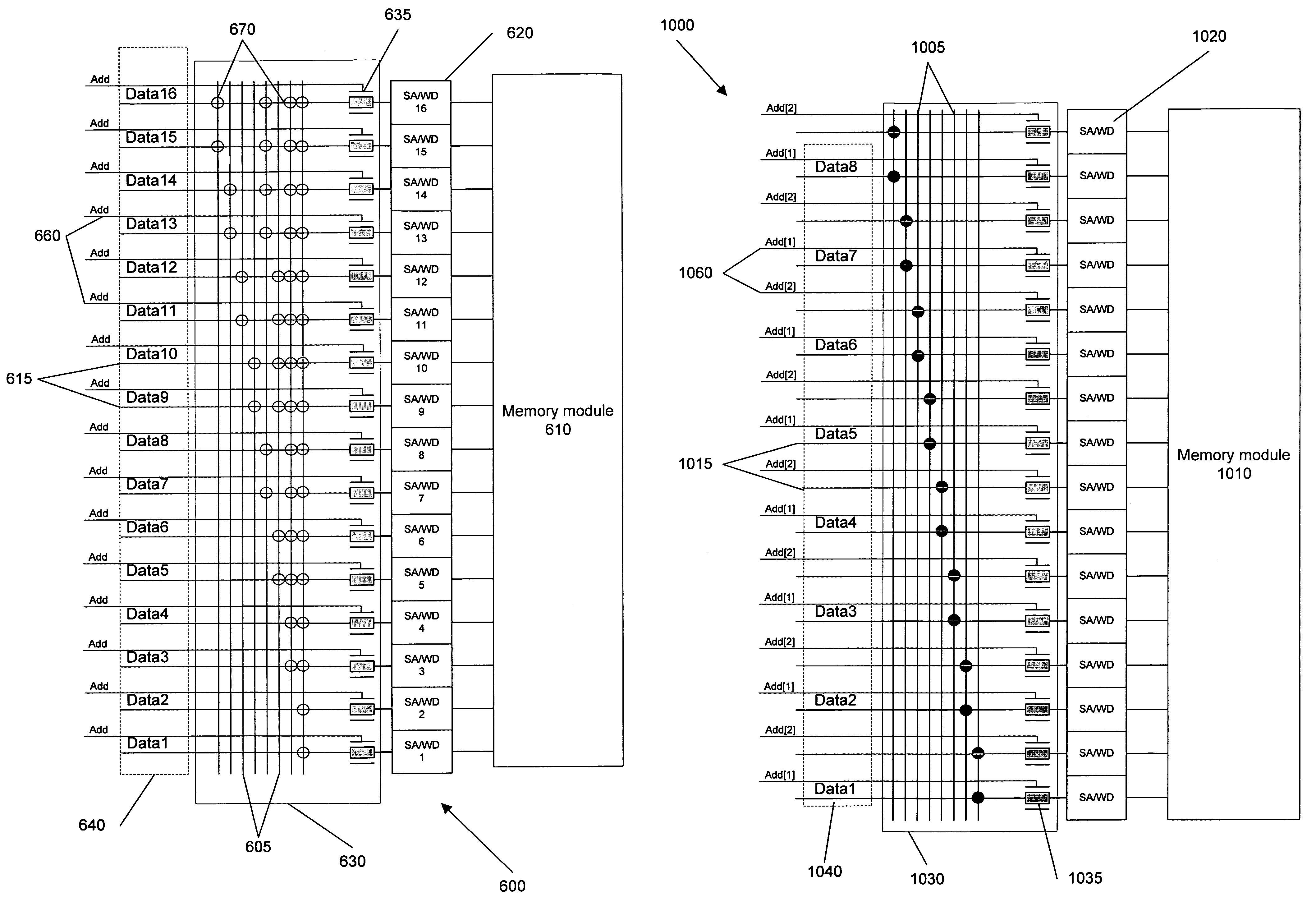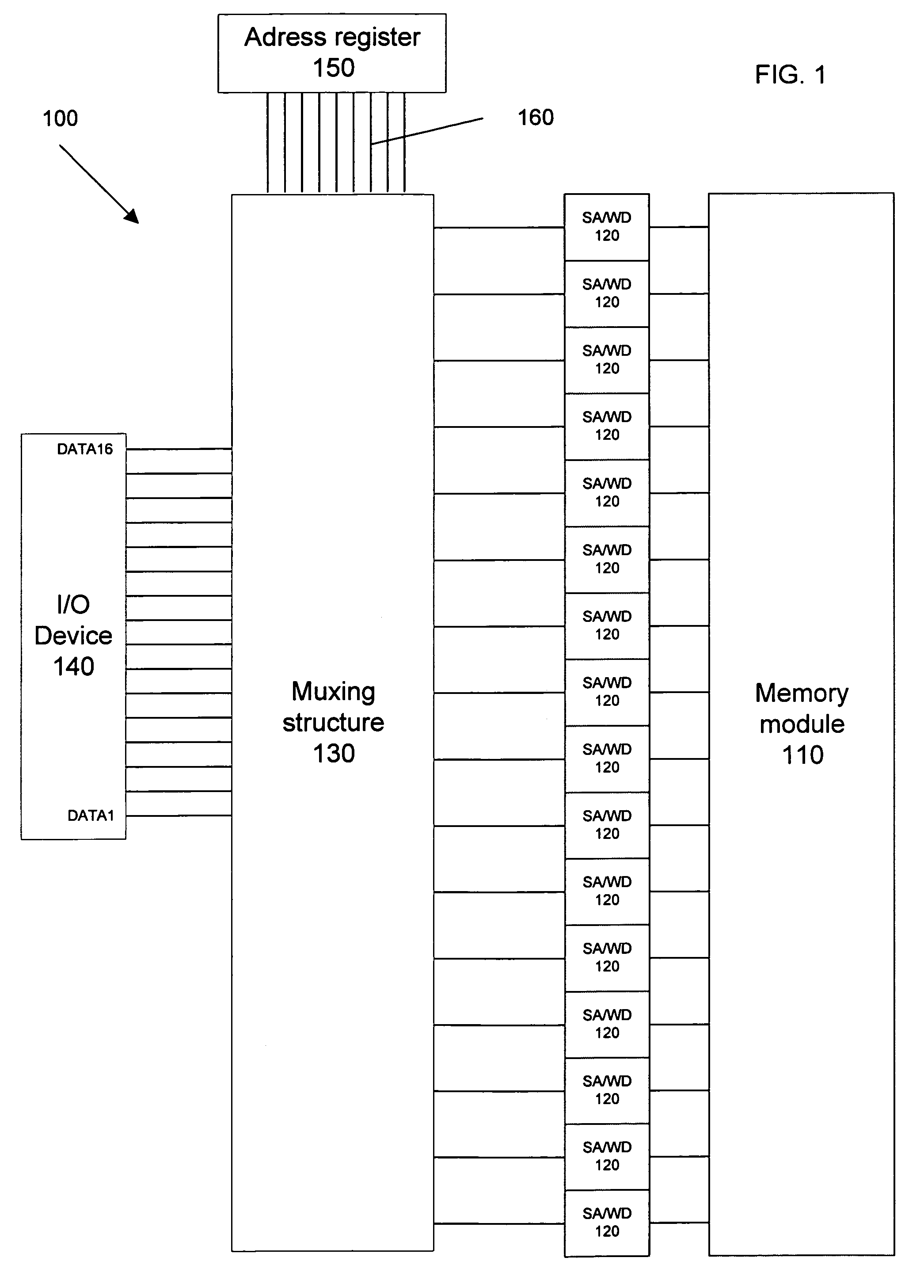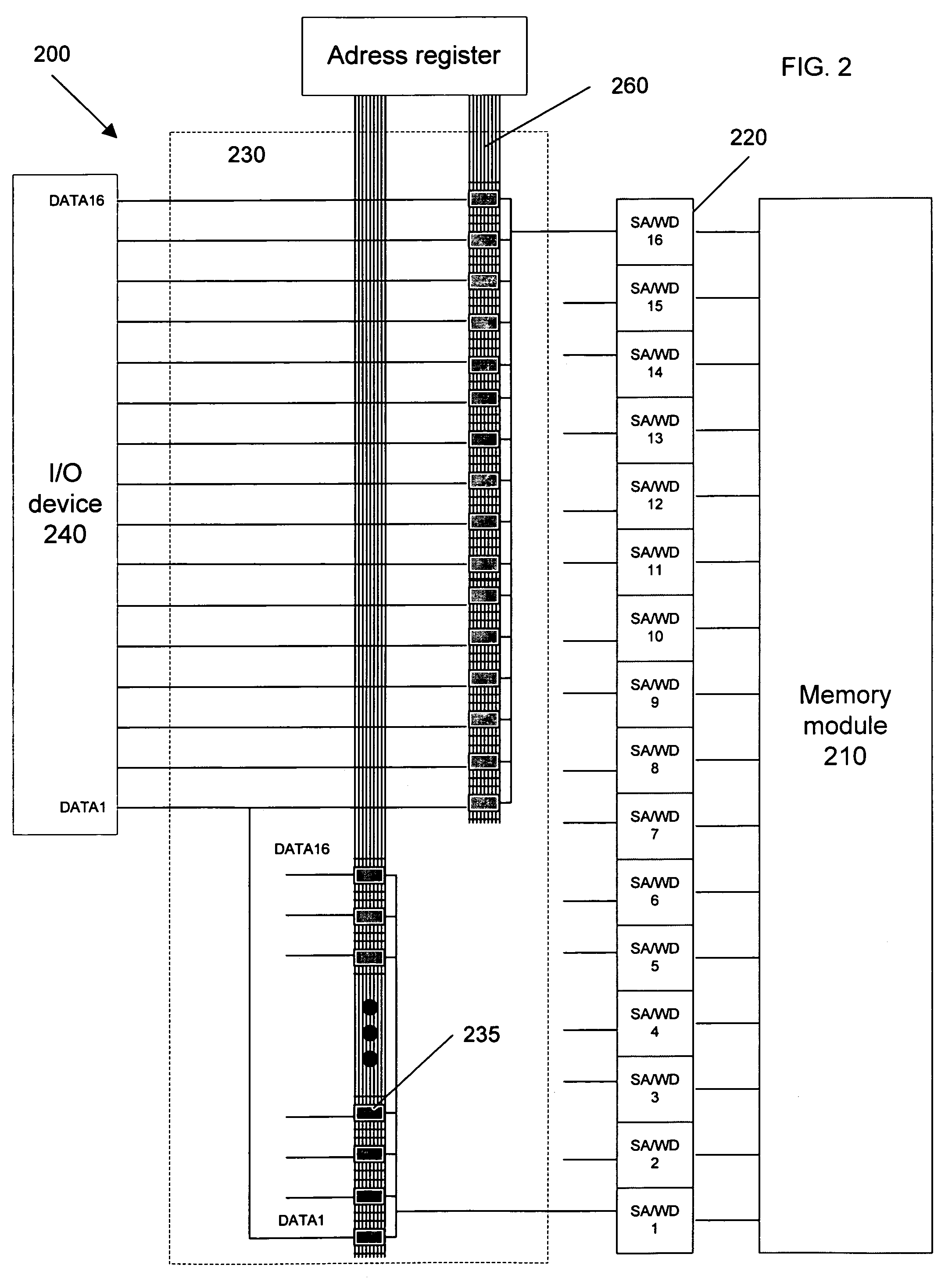FPGA equivalent input and output grid muxing on structural ASIC memory
a technology of asic memory and input and output grid, applied in the field of switching or multiplexing structures, can solve the problems of increasing the loading of input and output muxing paths, complex design, and large layout area, and achieve the effect of efficiently transmitting signals
- Summary
- Abstract
- Description
- Claims
- Application Information
AI Technical Summary
Benefits of technology
Problems solved by technology
Method used
Image
Examples
Embodiment Construction
[0021]Embodiments of the present invention are directed to methods and multiplexing (muxing) structures used, for example, to send data to or retrieve data from a memory module or other circuit element along data buses of different widths. Generally, the data is produced by a structured application-specific integrated circuit (ASIC). However, one skilled in the art will appreciate that embodiments of the invention may be applied to other types of integrated circuits and that the transmission of data along the data bus need not involve a memory module.
[0022]FIG. 1 shows an I / O device 100 with a memory module 110 capable of transferring data up to sixteen bits (X16) at a time. Each bit is transmitted through one of sixteen sense amplifier / write drivers (SA / WD) 120. During an operation of reading data from the memory module 110, each SA / WD may load in a different bit of data from the memory module 110. The data bits are then transmitted to a muxing structure (or memory interface) 130 f...
PUM
 Login to View More
Login to View More Abstract
Description
Claims
Application Information
 Login to View More
Login to View More - R&D
- Intellectual Property
- Life Sciences
- Materials
- Tech Scout
- Unparalleled Data Quality
- Higher Quality Content
- 60% Fewer Hallucinations
Browse by: Latest US Patents, China's latest patents, Technical Efficacy Thesaurus, Application Domain, Technology Topic, Popular Technical Reports.
© 2025 PatSnap. All rights reserved.Legal|Privacy policy|Modern Slavery Act Transparency Statement|Sitemap|About US| Contact US: help@patsnap.com



